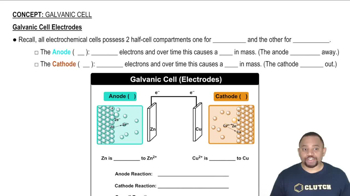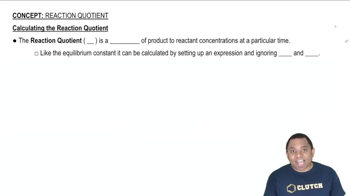Here are the essential concepts you must grasp in order to answer the question correctly.
Voltaic Cell and Electrode Reactions
A voltaic cell generates electrical energy through spontaneous redox reactions. In this context, the anode is where oxidation occurs (Al is oxidized to Al3+), while the cathode is where reduction takes place (Ag+ is reduced to Ag). Understanding these processes is crucial for analyzing how changes in concentration affect the cell's electromotive force (emf).
Recommended video:
Nernst Equation
The Nernst equation relates the cell potential (emf) to the concentrations of the reactants and products in a redox reaction. It shows that changes in concentration can shift the emf of the cell, allowing for predictions about how dilution or concentration adjustments will impact the overall voltage produced by the cell.
Recommended video:
Effect of Dilution on Reaction Quotient
Diluting the solution in the anode half-cell decreases the concentration of Al3+ ions, which affects the reaction quotient (Q) of the cell. According to Le Chatelier's principle, this dilution can shift the equilibrium position, potentially increasing the emf if the reaction favors the formation of products. Understanding this principle helps predict how the cell's performance will change with concentration adjustments.
Recommended video:





